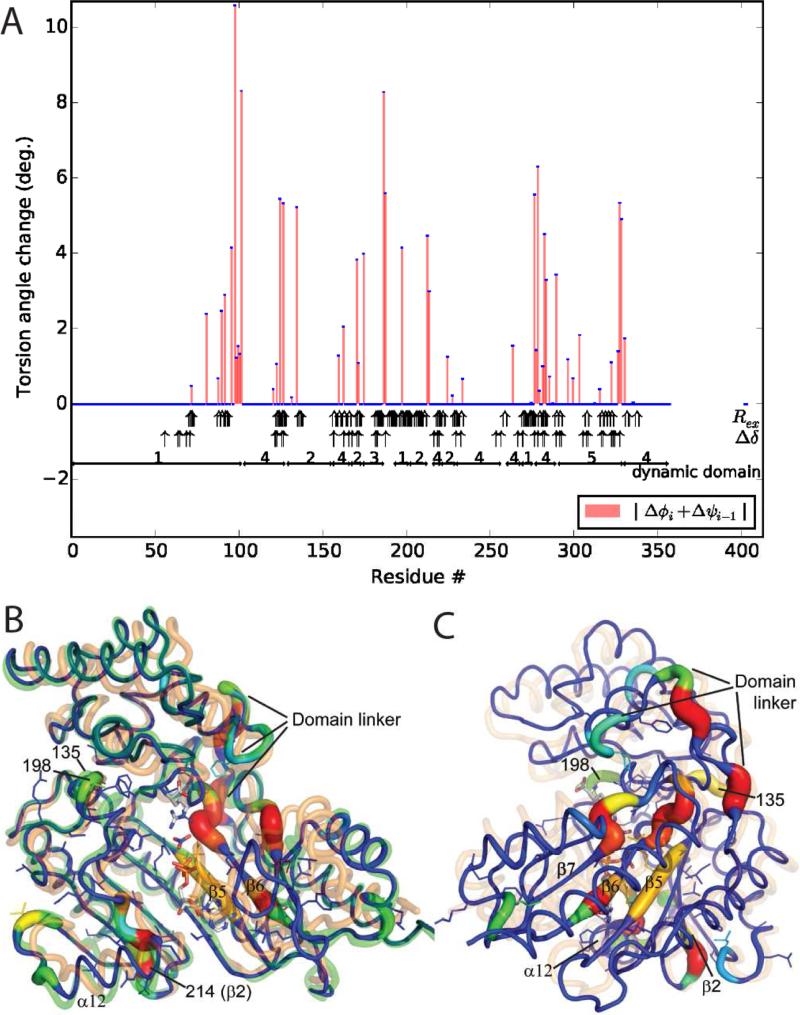Figure 2.
Flexible superposition of AK TSA on the substrate-free form. Two rounds of selection eliminated the 75% least consequential dihedrals. Refinement continued for 200 cycles with an -norm λ = 5. (A) Changes in pseudo-torsion angles. Annotation includes: dynamic domain designation (Hayward and Lee, 2002; Niu et al., 2011); observation of NMR relaxation exchange (Rex, wide arrows) in the substrate-free (Davulcu et al., 2009) or –bound (this work) states; and NMR chemical shift perturbation (Δδ, thin arrows) between substrate-free and -bound forms, excluding residues close to substrates. (B) Starting from the AK TSA structure (orange), the parsimoniously superposed model (color- and thickness-coded by magnitude of pseudo-dihedral rotation, blue to red) is now well fit to the substrate-free form (green). Transition state analogs are shown as a stick model. Side chains are shown for residues with backbone nitrogen Rex to highlight proximity to changing dihedrals. (See also Figure S5) (C) The TSA and superposed structures are rotated 90° to highlight flexing of the β-sheet.

